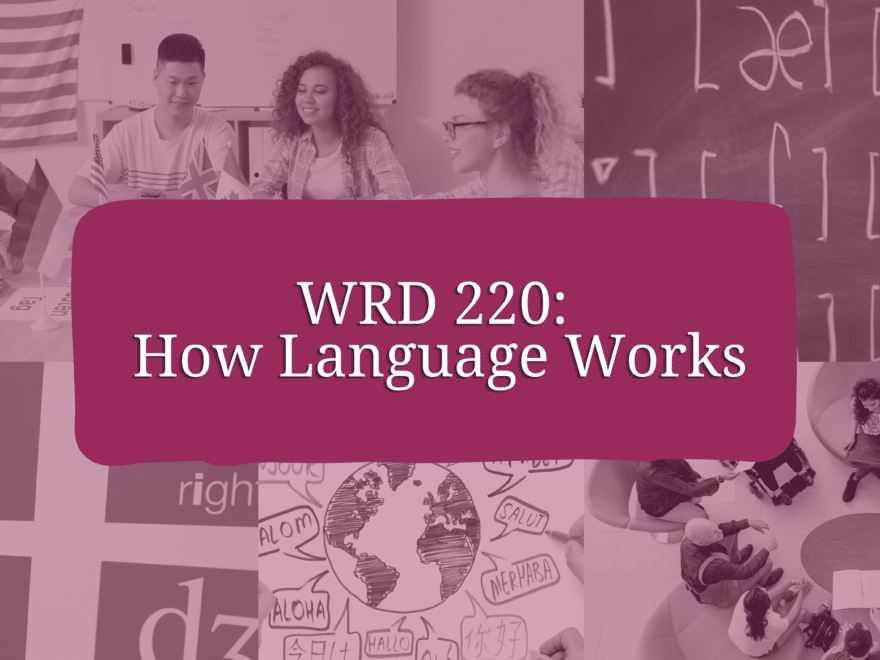In the upcoming Winter Quarter, Professor Jason Schneider will be teaching WRD 220: How Language Works, which offers an introduction to the study of linguistics. As registration approaches, this course gives students the opportunity to broaden their understanding of language and gain critical knowledge they can apply to their own writing, teaching, and research. Here, Professor Schneider shares more about the upcoming course and its array of topics that students will engage with.
How did you decide to teach this class, and how does it relate to your other teaching and scholarship?
JS: In addition to counting for WRD elective credit, How Language Works is one of the required courses for the linguistics minor at DePaul. I’ve been involved in supporting that minor since it started a few years ago, so I’m glad to be teaching this course. (One of the other courses that counts for the minor is WRD 264: Language, Self, & Society, which I have taught frequently.) My colleague in the Modern Languages department, Bradley Hoot, is director of the linguistics minor, and he first designed the course and has taught it a few times already (as MOL 220).
Generally, a lot of courses I teach relate to language, typically focusing on issues of language, society, and politics, or theories and methods of second language teaching. However, WRD 220 is a little different because it digs into the structural and cognitive side of language. That means that we’re going to examine in detail topics like phonology and phonetics, morphology, and syntax. We’ll be breaking down words and sentences, and even learning about really precise aspects of language that most people don’t think about, like how the position of the tongue changes to produce different vowels and consonants. These are the real nuts and bolts of how we create meaning.
Why would someone need to know “how language works”?
JS: Understanding how language works in these technical ways makes anyone’s experience of language more interesting. We all use language every day to do almost everything in our lives, but most people don’t have knowledge (or maybe meta-knowledge) about the many, many processes that come together to make linguistic interactions possible.
Also, understanding how language works can be empowering for writers. Being able to recognize and analyze your own linguistic choices when you build sentences, for example, gives you a deeper awareness of your writing. It gives you new ways to think about how you’re crafting language to connect with specific audiences. If you tutor or teach writing, you can extend this knowledge to support that work.
What kinds of reading and/or projects should students expect to complete in WRD 220?
JS: We will be using an introductory linguistics textbook called Language Files for most of our readings. Each chapter addresses a key area of language. For example, there are chapters on syntax, semantics, psycholinguistics, language change, and many other topics. For some of the homework assignments, we will do problem sets that involve analyzing specific examples of language. For example, we will create syntax trees and morphology trees (breaking down words into their parts), and we will apply ideas from semantics to understand how words change meaning over time.
Who should take this course?
JS: Anyone who wants to deepen their understanding of language should take this course, and especially WRD students who believe that knowing more about language could be positive for their writing. (I definitely believe that!) Additionally, students who are serious about learning other languages can benefit a lot from this course.
As course registration opens for Winter Quarter, enroll in WRD 220 to learn how language works, enrich your own language learning, and apply linguistic knowledge to strengthen your own writing! To stay up to date with upcoming courses, check out the WRD Blog’s Courses page as well as our ongoing Course Spotlights.
